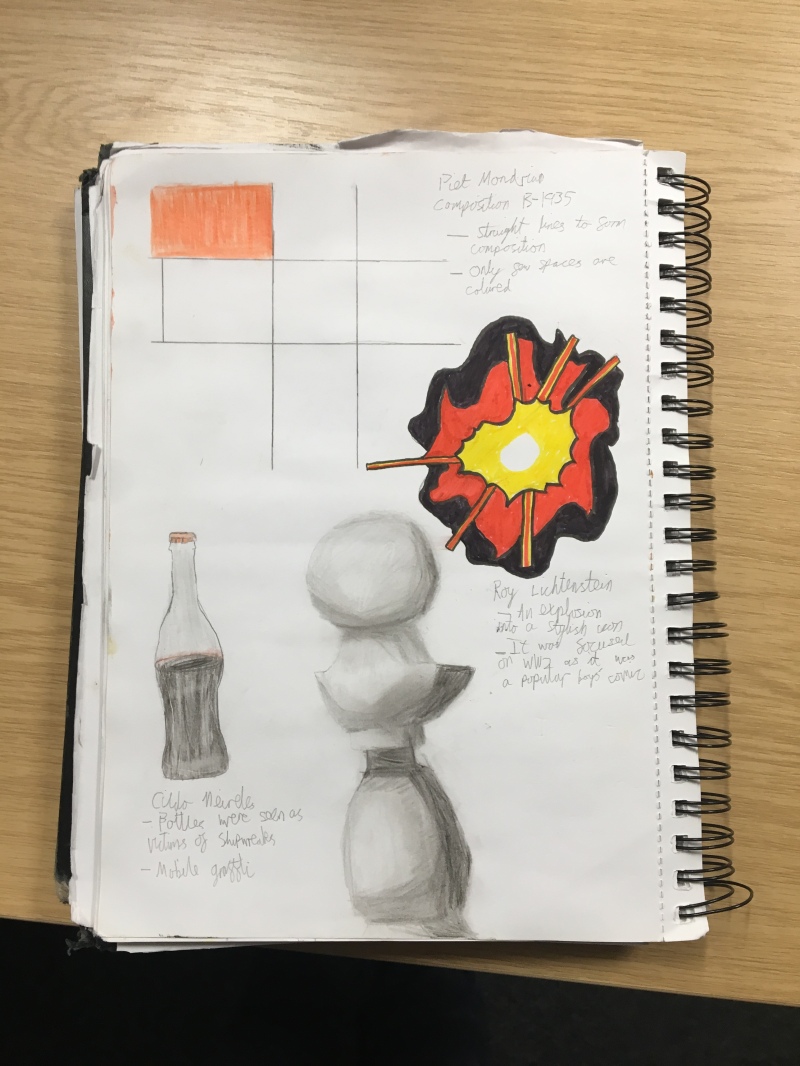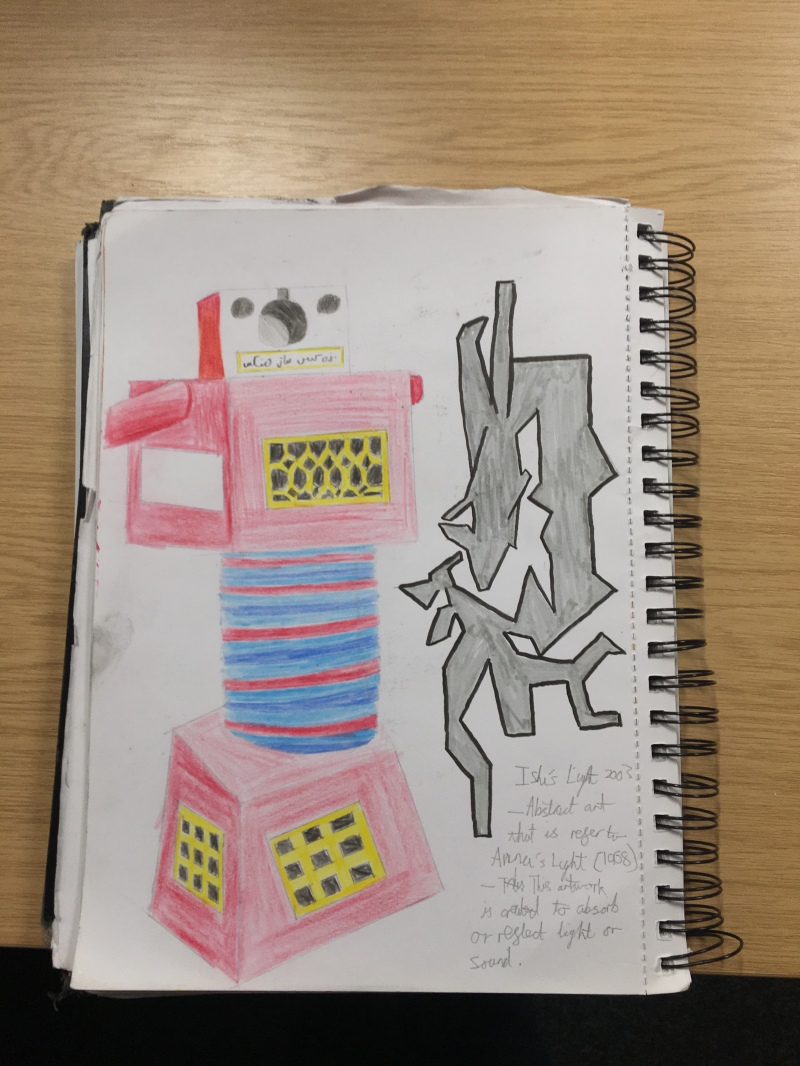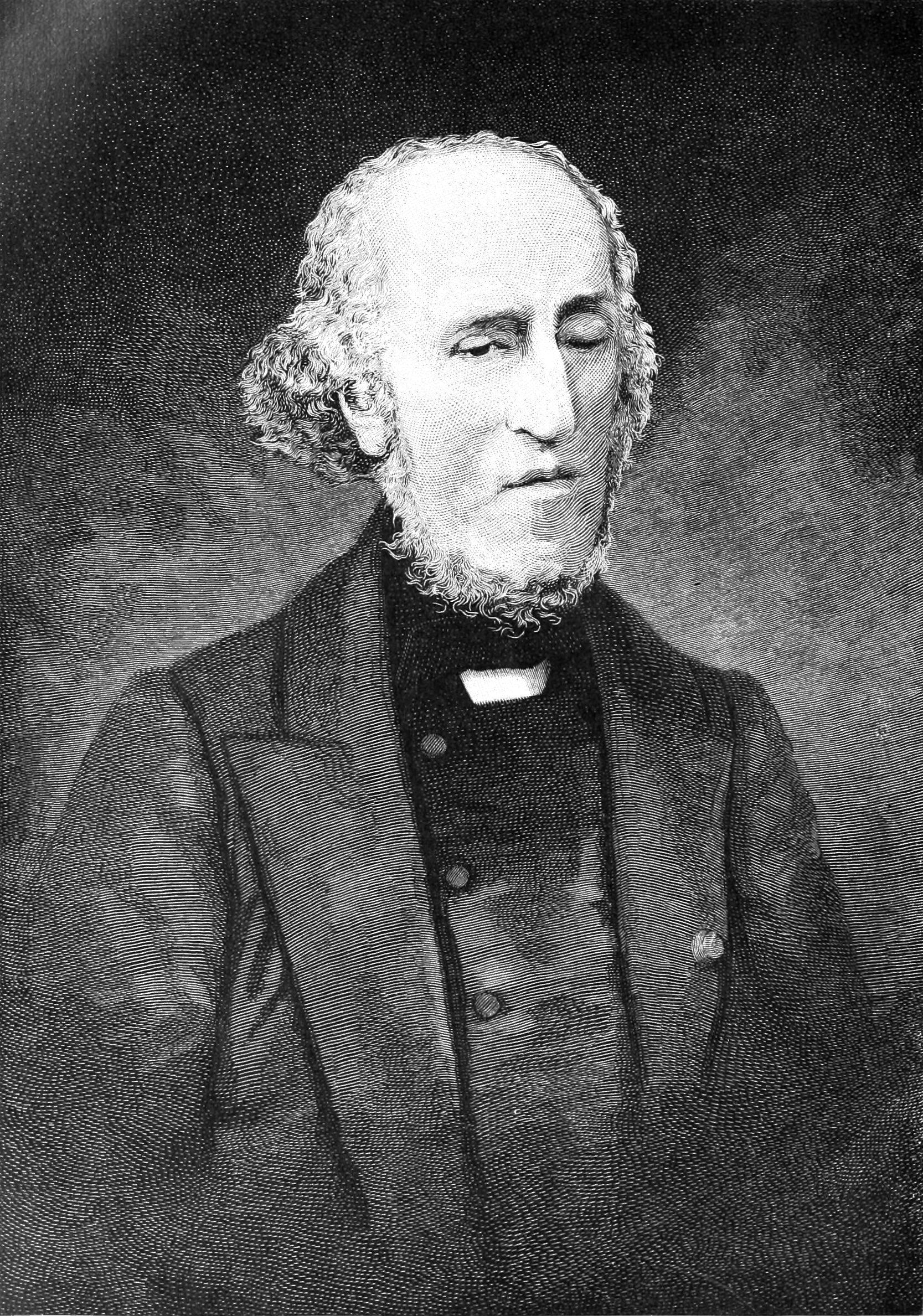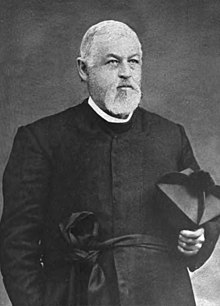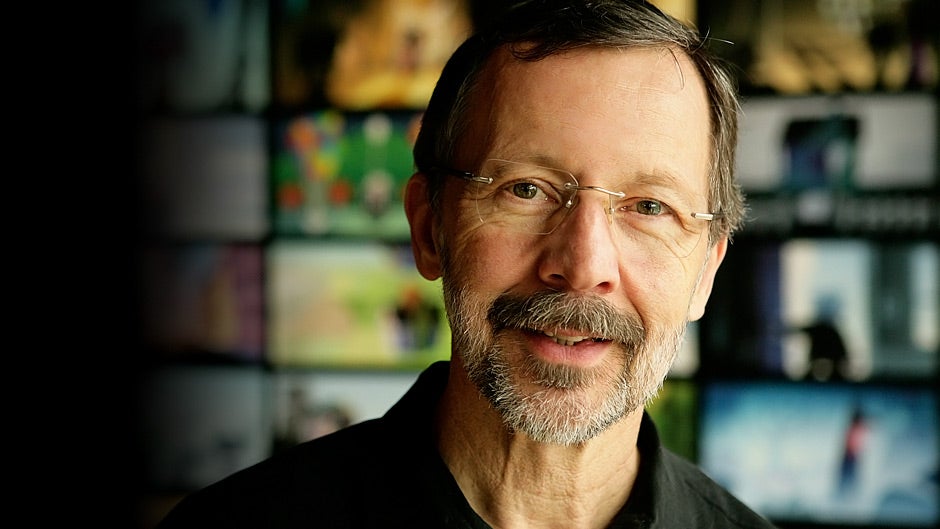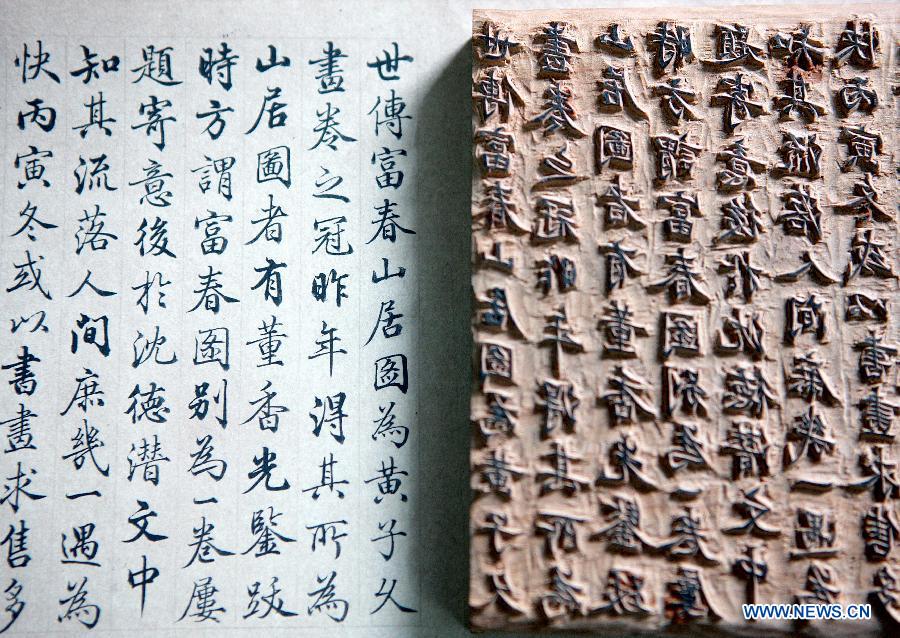Art Deco

Art Deco (1920’s and 1930’s)
Art Deco began in Europe, particularly Paris, in the early years of the 20th century, but didn’t really take hold until after World War I. The style emerged when the rapid industrialization was transforming the social life and culture. It represented luxury, glamour and faith in social and technological progress. In general, all artist, architects, fashion designers etc, generated their influential ideas by the Avant-Garde art, the rich colours and exotic themes of the Ballets Russes, and the urban imagery of the machine age.
Art Deco also represented wealth, sophistication and glamour and is strongly connected to the golden age in Hollywood. It implements traditional craft motifs with Machine Age imagery and brings the idea of harmony and order using basic geometrical shapes and symmetry to his distinguished style.
Style
Deco is recognizable by their distinct geometric shapes, intense, bright colours that stand out, and a decorative look. Art Deco is characterized by clean lines, hard edge or angular composition, bold curves, often with a vertical emphasis, and highlighted with stylized decoration and symmetry.
- geometric and angular shapes
- chrome, glass, shiny fabrics, mirrors and mirror tiles
- stylised images of aeroplanes, cars, cruise liners, skyscrapers
- nature motifs – shells, sunrises, flowers
- theatrical contrasts – highly polished wood and glossy black lacquer mixed with satin and furs.
Influences
- art nouveau – Deco kept the nature motifs of its predecessor but discarded its flowing organic shapes and pastels for bolder materials and colours such as chrome and black
- Cubism -painters such as Picasso were experimenting with space, angles and geometry
- early Hollywood – the glamorous world of the silver screen filtered through to design using shiny fabrics, subdued lighting, and mirrors.
The names
- Eileen Gray – furniture
- Raymond Templier – jewellery
- Clarice Cliff – china
- René Lalique – glass and jewellery
René Lalique

A French Designer who focused on the art of glass art which then lead on to creating bottles, vases, jewellery, chandeliers, and clocks. One of his work, “Spirit of the Wind” portrays a glass structure of a woman’s face with a large amount of hair. It shows a smooth texture allowing the art to show its beauty. The material that Lalique was glass for the “Spirit of the Wind”, he also includes materials such as horn, glass, enamel. aluminium, feathers, ivory and etc for his other artworks. Lalique participates International Exhibition of Modern Decorative and Industrial Arts and it made his career as a glassmaker working on numerous art projects. In my opinion, I do like how clear the art is and that is it easy to identify with it. I would suggest that it some extra pattern design to make it more unique.
Emile-Jacques Ruhlmann

Ruhlmann, a French designer, created “État Cabinet” which is luxurious homeware and it has a wonderful section of flowers that was carved onto the furniture. The materials that Ruhlmann was rare exotic woods that has a pleasant appearance towards the style of wood making art. The flowers were inspired from a particular style which is the Art Nouveau and the art style shows a variety of floral patterns and this has made an impact on Ruhlmann’s career. In my opinion, I like the colours of wood as it is elegant and makes a very good contract with the white floral design.
Expressionism

In 1905, Expressionism is an art movement that expresses what the artist is trying to explain from their painting. Expressionism is not meant to decipher from the composition of the painting but the emotion that the artist is putting in. Humanity has a lost connection between the world authenticity and spirituality and artist wanted to speak up about their discordant relationship with the world and it all started in Germany. Artists like Vincent van Gogh, Edvard Munch, and James Ensor have encouraged the formation of expressionism by displaying strong use of colours which presents yearning and a series of anxieties. It would inform abstract expressionism that leads to Germany to remind themselves of their art. During 1905 and 1920, Germany went through a phase of expressionist and would later spread across Europe. It also to point out that it was a crucial time for Neo-Expressionist artists which appeared in the 1980s.
Style
Expressionism declared their announcement in their new creation of the emotion of art. Artist was able to be open with their feelings and expressionism was all about feeling rather than focusing on the composition of the painting.
- Exaggeratedly the use of brushstroke
- Emotional state
- Vibrant colours
Influence
Names
- Edvard Munch
- James Ensor
- Mark Rothko
- Paul Klee
- Wassily Kandinsky
Edvard Munch
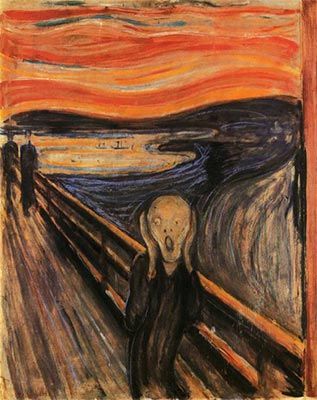
Munch has created a famous portrait that has come recognizable around the world and it became famous for how distorted the painting is and it shows agony in the picture. “The Scream” explains the negative emotions of how Munch saw the world. He was going through the Oslo at a bridge, he recalls the sky is red and that he was surrounded by fear itself which lead on from him hearing the numerous amount of screams. The materials that Munch has been using are crayons or even tempera or oil. When I am observing the painting, it does show unease and the artist are using negative colours to show the negatively that he saw on the bridge of Oslo.
Wassily Kandinsky
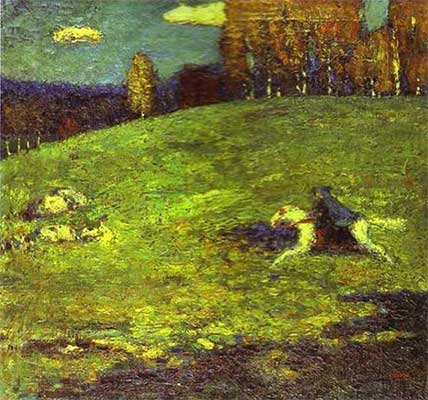
Kandinsky wanted artists to be inspired by their art on a deeper spiritual level. Der Blaue Reiter ( The Blue Rider) is explaining the contributions for the advancement of abstract art during the time that was happening in Germany. The materials that Kandinsky was oil painting and it works really well due to that the fact that the artist has managed to blends the colours and show the shading of each colour. In 1911, it has made a name for itself for having a sense of uniqueness for the new ideas for the art industry. In my opinion, I wish that the could have made the rider slight bigger and make the man clearer as it is hard to see on the appearance of the figure.
Futurism

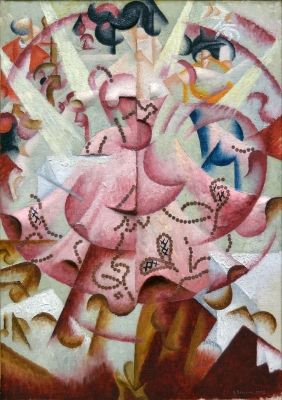
In the 20th century, Futurism is meant to show the advancements of new technology and a promising future for the people in 1909. People would like to see the beauty of the machine, speed and change. In the 20th century, futurism has embraced the far right politics and embracing popular media to generate ideas. Their enthusiasm had gained their interest in popular technologies and the media. They thought about the positive side after World War 1 by embracing the artist who was producing avant-garde art which later in became important.
Style
For how they approach their style, the art movement was using repetitive shapes and forms and they were using bold and dark colours colour palette. Futurism wants to envoke the idea of destruction and chaos.
- Repetitive shapes
- Dark colours
- Covered in a large number of objects.
Influence
- Impressionism
- Pointillism
- Cubist
Names
- Umberto Boccioni
- Giacomo Balla
- Carlo Carra
Umberto Boccioni
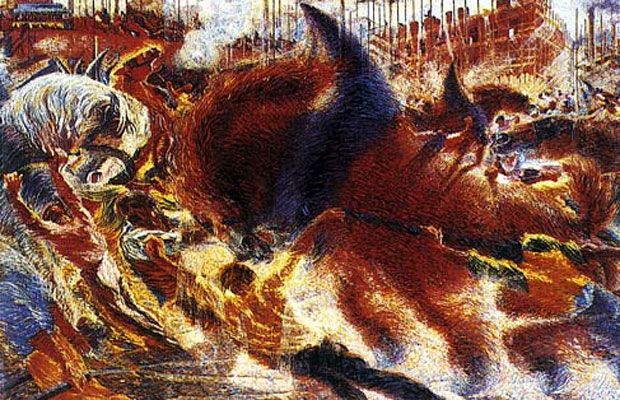
One of the first futurist painting that demonstrates chaos and destructions that is happening in the city. The City Rises shows a representation of war which for cultural progress as the people wanted this. On the painting, it shows numerous horses races and some workers who are struggling to possess control indicating that human and animals are in conflict. For Boccioni’s artwork, the material that has been used is oil paint. This piece represents the far right policy of how they want to see a change in new technology. Boccioni was inspired by Cubism and sculpture. In my opinion, I really like how Boccioni was using colours on the painting as it portrays a powerful message to the public and you can really see the chaos that is happening inside the picture.
Giacomo Balla
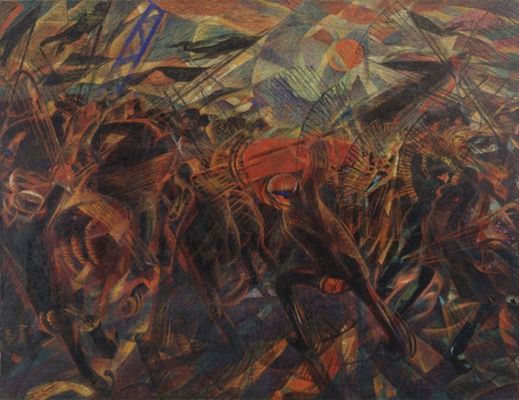
Balla was focused on the chrono-photography which shows several frames and this art technique has been used effectively. The painting has shown a woman walking her dog and she has been combing the use of opaque and semi-transparent shapes to show the contrast between black and white. The materials that Bella have used are oil paints. Her influencers were Umberto Boccioni and Gino Severini and she was interested in technology and industrialization. In my opinion, I consider this piece to be rather dull however, I do like the use of black which can be very appealing to others.
Dada

In 1926, Switzerland was focused on artist not pleasing objects that were made by crafts but rather the status of the artist. It has generated a powerful influence on major cities such as Berlin, Hanover, Paris and etc as they have generated their own group. Dada makes a mockery of materialistic and nationalistic attitudes. During the time where Cubism, Futurism, Constructivism, and Expressionism was active, Dada was influenced by that art movements. Dada was the first conceptual art movement that focuses on the open-ended interpretation of the subject. Their priority was to destroy the traditional values of art and replace them with the new art concept. Dada was anti-bourgeois and had a political association with the radical left ideas.
Style
Dada tends to use an everyday object that forces the manipulation of art to create conceptual ideas that everyone could interpret in a different way. Also, the artists often use collage technique for their artwork, typography on a larger and smaller scale to convey their creative ideas.
Influence
- Cubism
- Futurism
- Constructivism
- Expressionism
Names
- Kurt Schwitters – He is a German artist and he was the leader of the Dada movement.
- Marcel Duchamp – Conceptual art
- Hans Arp
Francis Picabia
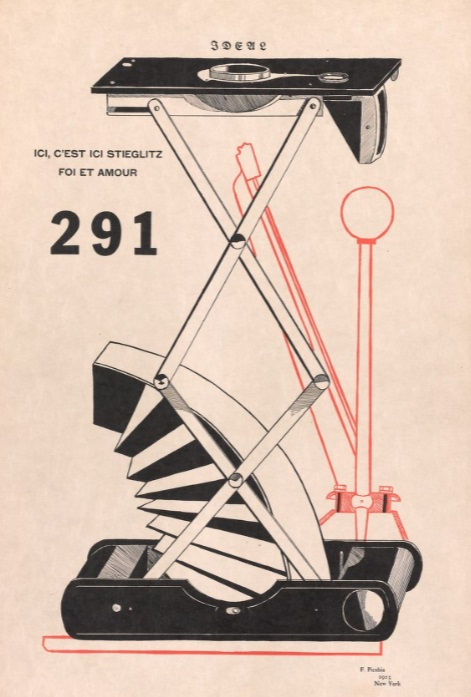
Picabia, a French artist, who has collected ideas and produces his own version of Dadaism. Ici, C’est Stieglitz (Here, This is Stieglitz) was created together along with Alfred Stieglitz which gave Picabia a tour around New York City. The drawing shows the mechanics of the model but it does not show the progress but it shows the work of the mechanics which provide an alternative to traditional artistic symbolism. The material that Picabia was using ink and graphite. In my opinion, I like how the design is very clear and the colours make it clear on what is what on the design aspect.
Hugo Ball
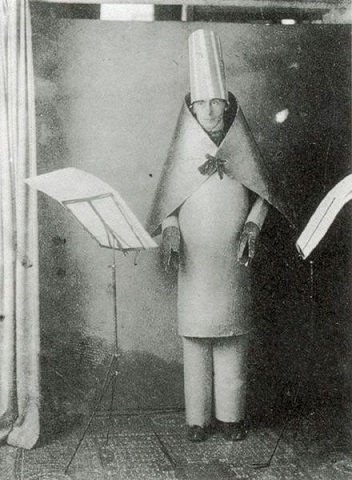
Ball created Reciting the Sound Poem “Karawane” which describes its rhythm and emotion. The costume that Ball has created for man is meant to be exotic and foreign to distract people’s surrounding from the upcoming war. This artwork was a photograph that was taken from Ball to create his own version of Dadaism. In my opinion, I wished that there is something more there to the picture as it is a dull portrait and there is no much in the picture which makes it interesting.
Cubism

Cubism is an art movement that involves shapes into space and it turned away the realistic side of figures. It blends with the background and showing objects from certain angles. This has been introduced in 1907 and it shows the use of a grid and the abstract style. Cubism has emerged in the 20th century, it was a revolutionary new art style of painting which transforming reality into the prism of geometrical shapes and forms. Georges Braque and Pablo Picasso were the founders of this art movement. The artist shared their ideas, criticizing their work, challenged and encouraged each other. They were soon joined by other artists who were experimenting with a different interpretation of the world around them.
Style
They follow and explore open forms that would allow the space to flow through them and allowing it to blend the background into the foreground. They mainly focus on the angles of the shape to make it bold and makes them move away from the ideal realistic drawings of models or objects.
- Angles
- Open forms
- Complex figures and shapes
Names
- Georges Braque
- Pablo Picasso
- Juan Gris
- Albert Gleizes
- Jean Metzinger
- Robert Delaunay
Pablo Picasso
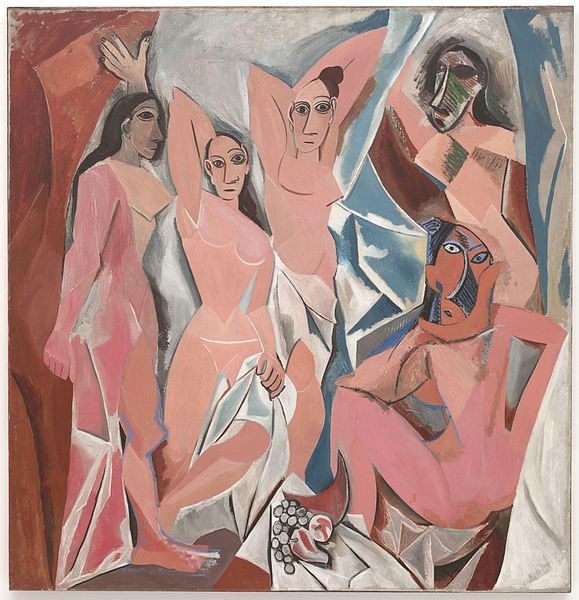
Picasso has shocked his friends for the content that he is making for the art industry and it shows experimentation. He would paint women as prostitutes in aggressively sexual postures and the way he wants to display his work is not aggressive, but also primitive. Picasso made Les Demoiselles d’Avignon using oil paint. Pablo Picasso was inspired by Paul Cézanne who was famous for their tribal art which allows him to be encouraged to produce structures and set his path towards Cubism. In my opinion, the imagery is quite exotic and that the use of shading really helps him to balance the painting which makes me like the piece.
Georges Braque
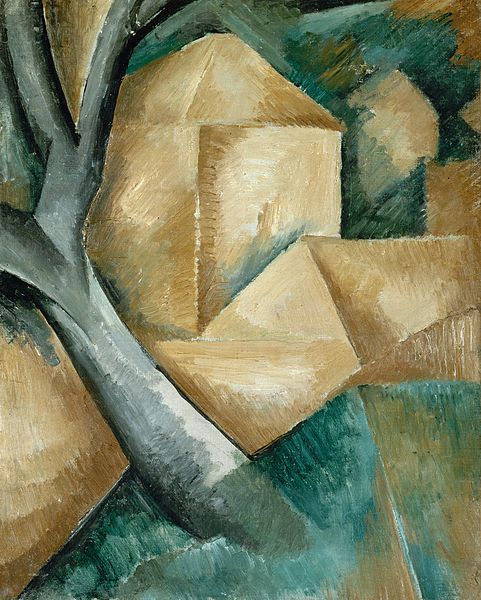
Braque was influenced by Picasso’s Cubism which leads on for him to adapting uni-directional, uniform brushwork, and flat spacing for the Houses at L’Estaque. He took into consideration of geometry shapes and there were no traditional shading to add depth to objects. The materials that Braque used oil paint. In my opinion, I like shading techniques that were approached to this artwork and I can tell what object is what.
Surrealism
In 1924, Surrealism is meant to release people’s imagination and people who believe in surrealism with a rational mind should be trapped with the power of imagination. With their imagination in place, it emphasis the personal imaginations which categories them in the tradition of Romanticism. People had to hide away their imagination as it considers to be taboo. Karl Marx hoped that the power to reveal the contradictions in the world and to give an urge about the revolution.
Style
Surrealism set off with a new direction of exploration and started to expand their creativity. Max Ernst has described the sty;e to show their distinct realities and draws interest from their juxtaposition.
- Creativity
- Uncanny objects
Influence
- Psychoanalysis
- The power of imagination
- Rationalism
- Literary realism
Names
- Karl Marx
- André Breton
- Sigmund Freud
- Max Ernst
- Salvador Dali
- Joan Miró
Joan Miró
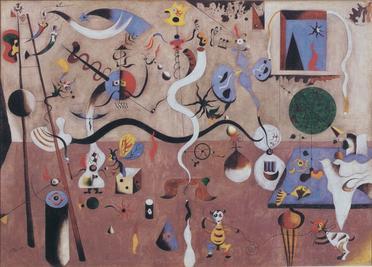
Miró shows perfect examples of surrealism which express fantastical spaces in his paintings. The shapes morph into different objects that bring life to the canvas. He was known for automatic writing techniques especially doodling or automatic drawing. Miró was using oil paint to create Carnival of Harlequin. Through his studies in Spain, he discovers Fauvism, Post-Impressionism, Cubism and Surrealism. What I like about this painting is that it brings life to the painting and it makes it joyful to watch.
René Magritte
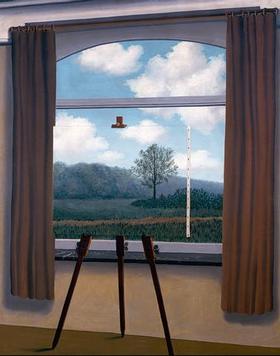
With the use of puns, the artist is creating a correlation between the representation of something and the thing itself. The canvas seems like it is like a dream with the odd setup creating a fabrication from the artist. Despite the illusion, Magritte uses oil paint to produce The Human Condition. In my perspective, I like how the artist tricks the audience to believe that the audience is looking outside but they do not know there is canvas over there that would blend around the background.
Pop Art
It all started with New York artists who drew eye-popping imagery that was part of an international phenomenon. Using media arts, pop art becomes one of the most recognizable styles of modern art. The art movement became farther from traditional art and started to make a major shift in the direction of modernism. A pop artist would celebrate objects or people’s originality and to gain popularity of the modern art.
Style
Pop Art uses iconic object or models that we would recognise from the media. They would use imagery to act as an enthusiastic endorsement to present the art as a valuable place in the post World War 2.
- Media
- Popular models
- Imagery
- High and low art
Names
- Andy Warhol
- Py Lichtenstein
- James Rosenquist
- Claes Oldenburg
- Eduardo Paolozzi
Eduardo Paolozzi

A key symbol for a British post-war combining pop culture documents like a pulp fiction novel cover. Paolozzi focuses on the mass culture and technology with high art. The material that Paolozzi was using collage. In the 1940s, Paolozzi went to Paris and was inspired by Jean Dubuffet and Alberto Giacometti and by combing the influences of elements of popular culture. In my opinion, it shows a good standard of composition, and how they are promoting the advertisement is appealing.
Roy Lichtenstein
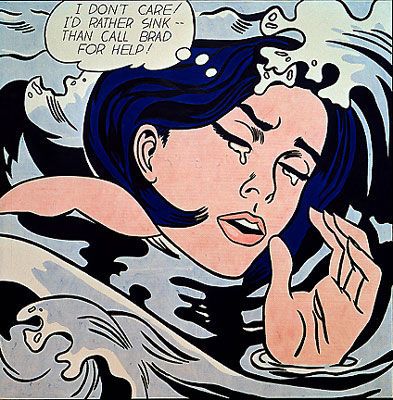
Originally from the DC comic, Lichtenstein shows a complex technique creating a dramatic composition to show cruel visual imagery. He uses bold colours to make his art style very eye-popping and clear to see what is happening. With advertisements and comic strips out in the 1960s, Lichtenstein was inspired by those media and it appeals towards him. Roy Lichtenstein used oil paint to produce attracting artwork. I really like his art style as the colours are clear to see and Lichtenstein tells the story when he designs them which makes me interested in them.
Modernism
In the 19th century, Modernism conveys a culture trend and changes that have become popular in Western society. It helped an artist to produce new imagery materials that support the use of modern societies and to help build hope. Their belief was the progression of human’s lives. The artwork is meant to be a reflection on the realities and the hope of modern societies. Modernism has become a dominant idea of art with the use of different forms such as shapes, colours and lines. It’s the emphasis on the materials, techniques and process.
Style
Modernism tends to bring out the values of modern industrial life by bringing new imagery, materials and techniques to create a new alignment of the society and culture from the early decades.
Influence
- Human life and society
- Western Society
Names
- Clement Greenberg
- Piet Mondrian
- Georgia O’Keeffe
- Édouard Manet
- Henri Matisse
Piet Mondrian

Mondrian designed Composition with red blue and yellow as they designs follow straights lines that form columns and some of the squares are filled in with different colours. He was influenced by the works of Pablo Picasso, Theo van Doesburg and Georges Braque. In my opinion, I do not like the visual aspect due to its simplicity and I do wish that the artist need to apply more colours to his work to make it more attractive.
Georgia O’Keeffe

One of O’Keeffe’s painting shows the beauty of the elegant white lily and the shading of the white makes the whole painting looks so appealing and very attractive. O’Keeffe is considered to be the Mother of American modernism. This art piece shows how it brings influences to the art movement of modernism which allows the artist to be inspired by. Consider that she is the Mother of American modernism, she has tragically lost her husband and she moved to New Mexico to be inspired by the painting and photography by Alfred Stieglitz.
Post Modernism
In 20th-century, the art movement that mainly focuses on arts, architecture, and criticism. It has created a new start from modernism from something new. It focuses on what is happening in the modern world than focusing on experimenting the forms, technique and processes. Postmodernism can be considered to be opposite of modernism with the ideas and values. Whilst modernism focuses on the idea of idealism and a utopian vision of human life and society, postmodernism was created for the reason of suspicion and scepticism. Modernism clarifies that postmodernism has embrace complex and contradicting the meaning of art.
Style
Postmodernism focuses on the scepticism and always contradicted the idea of progress where the truth is relative.
- Architecture
- Decorative art
Names
- Jean Francois Lyotard
- Jacques Derrida
- Fredric Jameson
Jeff Koons

An American artist who has designed popular culture that focuses on animals or objects with stainless steel to produce. Banality is the first series that started in Koons’ work and it started to grow in 1988. This artwork has been sculptured by Koons and it has been given to a rise of the use of copyright. In the 1980s, Koons was inspired by what you might find in a yard sale like plastic toys, vacuum cleaners, and etc. For an artist like Koons, he was using materials such as wood, marble and stainless steel for sculpture. In my opinion, I do not understand where the artist is going for with the pig and the kids, however, the colours that apply for the sculptor fits very well and it is very appealing.
Andy Warhol
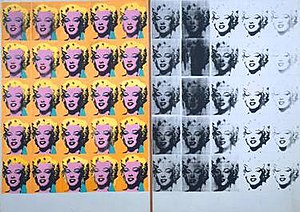
Created by an American pop artist, Warhol has created a series of images of Marilyn Monroe with one side coloured and the other side monochrome. His art became popular quickly as he uses a famous celebrity and has made quite a influences in his life. For this wonderful piece that Warhol has created have used materials such as acrylic paint for this painting. As Warhol gather his knowledge about pop art and modern art movement, he was inspired by the world. In my opinion, it shows that it is a very unique approach for the modern industry and it shows a good contract of the colour version and the monochrome version.
1990’s Britain Art
Young British Artists (YBAs) was introduced around in the 1990s and their approach for their artwork was rather bizarre as they were opening to their ideas. They decided that whatever they would be made would be considered as art. There is not a particular style that the artist would go for, they would experiment on their chosen materials or produce a form they would like.
Style
They are known for their shocking result in the art as they very open from their opinions. It has been embedding new ideas of the form of creativity and been polishing the traditional separation of media onto painting, sculpture and printmaking.
Names
- Damien Hirst
- Michael Craig-Martin
- Sarah Lucas
- Angus Fairhurst
- Michael Landy
Damien Hirst

Hirst is considered to be one of the richest artists in the world with his wealth valued at a price of £215 million. During the 1990s, Hirst has dominated the art industry and one of artwork is worth millions which is the “For the Love of God” as it is worth £100 million. A daunting image of the skull is encrusted of thousands of diamonds to enhance the appearance to show the fanciness of the skull. The material that he has been using for the skull are diamonds but as it is at a small size, Hirst would need to come up with a sequence of pattern that would fit the skull perfectly and everything else is in align with each other. John Noakes has an impact with Hirst’s career with his spin art, Hirst was observing the spin painting that Noakes has done for an episode of Blue Peter which was a children TV show. In my opinion, I really like the aesthetic of the skull as it shines beautifully and the diamonds are aligned with each other which makes me think that the artist has taken consideration and patience with this work.
Tracey Emin

Emin has her own unique way of presenting her work as she is trying to portray her lifestyle by using real-life materials. My Bed was created in 1998 her artwork brought the media their attention as she presented her work in an unusual way which was consistent of bedroom objects. Emin was quite fascinated by the works of Egon Schiele and Edvard Munch as they focus on expressionism. In my opinion, I find this piece to be very disorientated and obscure and I could not possibly consider due to the fact that it looks like a mess. Also, the artwork could have been made easier by other people.


